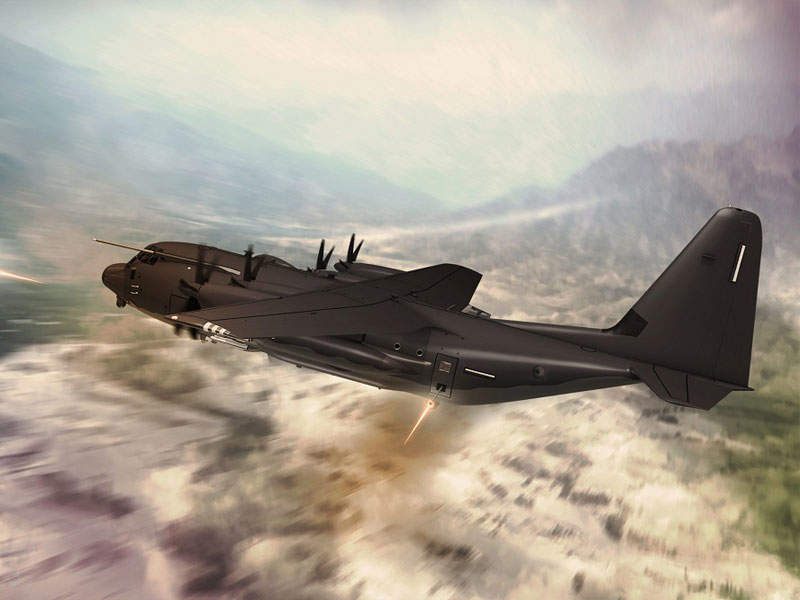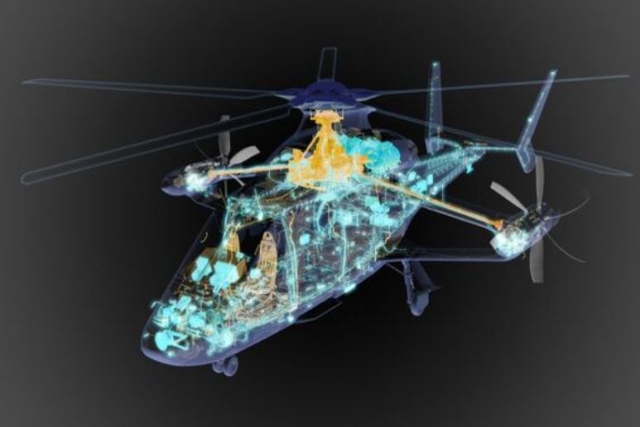SOURCE: RAUNAK KUNDE / NEWS BEAT / IDRW.ORG

Saab India is aiming to leverage the Transfer of Technology (ToT) for local manufacturing of F-414 engines by Hindustan Aeronautics Limited (HAL) from GE Aerospace as a key advantage in its bid for the Indian Air Force’s (IAF) Medium Multi-Role Fighter Aircraft (MRFA) tender.
The strategic importance lies in the fact that the Gripen-E fighter jet, offered by Saab, also utilizes the same 4-GE-39E turbofan engine developed by General Electric. While HAL is aiming for an 80% ToT on the F-414 engines, primarily for the upcoming Tejas MkII fighter jets, Saab sees an opportunity here.
Continue readingSOURCE: RAUNAK KUNDE / NEWS BEAT / IDRW.ORG

India and the United States have taken significant strides in advancing priority co-production projects, including the crucial GE F-414 engine, which is set to power India’s next-generation Tejas Mk-2 aircraft. This collaboration marks a significant step in enhancing India’s defense capabilities while strengthening the strategic partnership between the two nations.
The US-based company GE Aerospace has provided its cost estimate for the co-production deal of the F-414 engines. Negotiations on the final pricing are expected to be completed soon, paving the way for Hindustan Aeronautics Limited (HAL) to locally manufacture the engines in India within the next three years. The co-production arrangement includes an impressive 80% Transfer of Technology (ToT), which will significantly boost India’s domestic manufacturing capabilities in the defense sector.
Continue readingSOURCE: AFI

Throughout the ongoing conflict in Ukraine, Russian fighter jets have demonstrated their effectiveness and lethality, especially near the frontlines. Among the most formidable aircraft in the Russian arsenal are the Su-35S and the MiG-31BM, equipped with advanced long-range air-to-air missiles. The Su-35S, armed with the R-77-1 missile, and the MiG-31BM, carrying the R-37M missile, have proven to be significant threats to Ukrainian aircraft. According to a recent study, these long-range missiles, particularly the R-37M, have shown remarkable success against Ukrainian fighter planes, establishing Russian air superiority in many contested areas.
The R-37M missile, deployed by the MiG-31BM, is designed to target high-value airborne assets such as tankers, Airborne Warning and Control System (AWACS) aircraft, and other Command, Control, Communications, Computers, Intelligence, Surveillance, Target Acquisition, and Reconnaissance (C4ISTAR) platforms. The missile allows the launch platform to remain out of the reach of any escorting fighter jets, enhancing the survivability of Russian aircraft while delivering lethal strikes against critical enemy assets.
Continue readingSOURCE: AFI

The Indian Space Research Organisation (ISRO) has reached significant milestones in the development of its Hypersonic Air-breathing Vehicle with Airframe-integrated Scramjet (HAVA). This ambitious project aims to enhance India’s capabilities in hypersonic flight technology, a critical area of research with profound implications for both civilian and defense applications. Recent advancements in the HAVA project highlight ISRO’s continued progress toward realizing this cutting-edge technology.
One of the critical achievements in the HAVA project is the successful completion of its aerodynamic characterization. This phase involved detailed analysis and testing to understand the vehicle’s behavior in hypersonic conditions, ensuring that the design meets the rigorous demands of high-speed flight. The results provide valuable data that will guide the further development and refinement of the HAVA vehicle, ensuring stability and efficiency during operation.
Continue readingSOURCE: AFI

The successful flight test of India’s Phase-II Ballistic Missile Defence (BMD) system is a significant stride towards bolstering the nation’s security posture, particularly in the context of potential threats from China.
This achievement carries profound implications for India’s strategic landscape.
Continue readingSOURCE: AFI

A significant milestone was achieved in the Indian Navy’s modernization efforts as the lead ship of the P17A frigate class, INS Nilgiri, embarked on its maiden sea trial. This momentous event marks the culmination of years of dedicated work by the Indian Navy, the Ministry of Defence, and the Mazagon Dock Limited (MDL).
The sea trial comes an impressive 80 months after the block erection commenced at MDL. This remarkable feat underscores the efficiency and dedication of the teams involved, making INS Nilgiri the fastest-built lead ship of the Indian Navy’s large modern warships.
Continue readingSOURCE: IDRW.ORG TEAM

The Indian Navy has reportedly raised concerns over L&T Navantia’s bid for the prestigious Project-75I submarine program. The core issue revolves around the Air-Independent Propulsion (AIP) system, a critical technology for submarine endurance.
While L&T Navantia has touted its new Bio-Ethanol Stealth Technology (BEST) AIP system as a game-changer, the Indian Navy is insistent on a sea-worthy AIP system that is already integrated into a submarine. The Spanish company’s AIP trials were conducted on a land-based facility, a fact that has not impressed the naval brass.
Continue readingSOURCE: IDRW.ORG TEAM

Defence Analyst Ranesh Rajan, speaking to idrw.org, has suggested that Pakistan’s plans to procure the Chinese FC-31 fifth-generation stealth fighter jet following its recent acquisition of the J-10CE indicate that India’s purchase of Rafale fighter jets has unsettled the top brass of the Pakistan Air Force (PAF). This development comes after the PAF’s acquisition of 25 single-seat J-10CEs, which was initially portrayed as a counter to India’s acquisition of 36 Rafale jets.
The PAF’s procurement of the J-10CE, a single-engine multirole fighter, was viewed as a reaction to the Indian Air Force’s (IAF) induction of the Rafale, a twin-engine multirole fighter with advanced capabilities. However, Rajan points out that the real motivation behind the purchase was the poor performance of the PAF’s JF-17 fighters, which have reached the end of their product development stage and underperformed during the 2019 conflict with India.
Continue readingSOURCE: AFI
Last year, Chief of the Indian Air Force (IAF), Air Chief Marshal Vivek Ram Chaudhari, emphasized the need for foreign collaboration in developing niche technologies for India’s ambitious 5th Generation Advanced Medium Combat Aircraft (AMCA) fighter program. In an interview with “BW Business World,” Chaudhari highlighted the critical importance of this collaboration to avoid delays and ensure the program stays on schedule.
The AMCA program, a key project for India’s defense modernization efforts, aims to develop an indigenous 5th Generation stealth fighter jet to bolster the Indian Air Force’s capabilities. However, Chaudhari expressed concerns about potential delays in developing certain indigenous components, which could lead to more significant delays in the overall program timeline.
Continue readingSOURCE: AFI

The Indian Air Force (IAF) equips its C-130J Super Hercules transport aircraft with the chin-mounted FLIR Star SAFIRE III EO/IR (Electro-Optical/Infrared) sensor system to enhance the aircraft’s operational capabilities. This sophisticated sensor suite plays a crucial role in improving situational awareness, navigation, and mission execution in diverse environments.
The FLIR Star SAFIRE III is a multi-sensor system that integrates advanced electro-optical and infrared imaging technologies.
Continue readingSOURCE: AFI

Pakistan has reportedly received a fresh batch of Akinci Unmanned Combat Aerial Vehicles (UCAVs), further bolstering its military capabilities. The delivery of these advanced drones marks a significant milestone in Pakistan’s efforts to modernize its armed forces.
The Akinci UCAV, developed by Turkish Aerospace Industries, is a high-altitude, long-endurance drone capable of carrying a variety of payloads, including precision-guided missiles and surveillance equipment. Its advanced features and capabilities make it a valuable asset for military operations.
Continue readingSOURCE: AFI

A high-level delegation from the Brazilian Navy, led by Commander of the Brazilian Navy Admiral Marcos Sampaio Olsen, visited Mazagon Dock Limited (MDL) today. The delegation was warmly welcomed by the MDL team, led by the Commander.
The Brazilian Navy delegation toured an under-construction warship at the MDL shipyard, as well as the submarine facilities. They also visited the MDL Heritage Gallery, which showcases the shipyard’s rich history and achievements.
Continue readingSOURCE: AFI

The “Pratigya 2024” exhibition, held from August 22 to August 24 in Bhiwani, Haryana, provided a comprehensive platform for defense organizations and technology innovators to showcase their latest advancements. Among the participants was Advanced Weapons and Equipment India Limited (AWEIL), a prominent player in India’s defense sector, known for its expertise in the design and manufacture of advanced weapon systems. AWEIL’s exhibition highlighted its commitment to advancing India’s defense capabilities through innovation and indigenous development.
At the “Pratigya 2024” exhibition, AWEIL showcased a wide range of its cutting-edge weaponry and defense equipment, demonstrating the company’s technological prowess and its ongoing efforts to strengthen India’s defense infrastructure. Key highlights of AWEIL’s showcase included:
Continue readingSOURCE: RAUNAK KUNDE / NEWS BEAT / IDRW.ORG

Lockheed Martin has unveiled an ambitious proposal to provide India with a highly specialized variant of its C-130J Super Hercules transport aircraft, tailored specifically for special operations. The offer comes in response to the Indian Air Force’s (IAF) Medium Transport Aircraft (MTA) tender.
The U.S. defence giant is keen to capitalize on the IAF’s existing experience with the C-130J, which has been successfully employed by the National Security Guard (NSG) for rapid deployment across India. Building on this foundation, Lockheed Martin proposes the C-130J-SOF, a highly customized version designed to meet the demanding requirements of special operations forces.
Continue readingSOURCE: RAUNAK KUNDE / NEWS BEAT / IDRW.ORG

Hindustan Aeronautics Limited (HAL) has outlined a strategic approach to rotorcraft engine development, focusing on immediate needs while keeping an eye on future technologies. The company has acknowledged the potential advantages of next-generation engines, particularly those capable of powering tilt-rotor aircraft. However, the associated costs and technological complexities have prompted a more conservative approach for current programs like the Indian Multi-Role Helicopter (IMRH).
HAL is currently collaborating with Safran to develop a new turboshaft engine for the IMRH. This engine will be based on current technology, ensuring a balance between performance and affordability. The decision to prioritize this engine stems from the immediate needs of the Indian armed forces and the desire to avoid the substantial investments required for next-generation engine development.
Continue reading